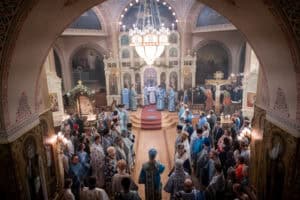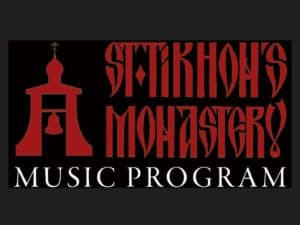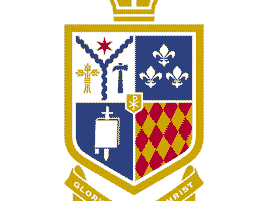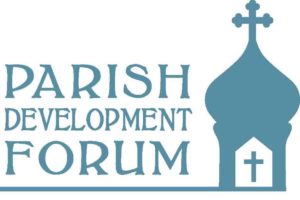PART V
April 10th came and went this year during an unexpected time of global pandemic. Our nation experienced quarantines, social distancing, and other isolation precautions. Work, school and life in general changed for many people. Large gatherings and travel were discouraged, and to the dismay of many, signs were posted on locked church doors stating that church buildings would be closed to both parishioners and the public for everyone’s health, safety and wellbeing until further notice.
On one hand, April 10th, 2020 may not have been an ideal time for celebrating the 50th anniversary of our autocephaly. It came and went quietly on a Lenten Friday without any large gatherings. Not being able to gather together for in-person celebrations or worship services has been a heavy cross to bear – especially during this time of the year when our faith celebrates the holiest of weeks leading to the radiant feast of feasts; the Pascha of our Lord. Someone you know has probably already made the remark that “This was the Lentiest Lent they have ever Lented.” For many, this year’s Lenten Spring was a different kind of desert experience; a different kind of “dry and thirsty land where there [was] no water” (Ps. 63:1).
On the other hand, there was something extraordinarily beautiful that I noticed happening all over the midwest, both before and after April 10th. Maybe you observed this as well… All of a sudden, there seemed to be an unprecedented number of Orthodox Church services being recorded and live-streamed on social media. This effort to adapt, connect and share the church’s profound life of prayer, repentance and celebration opened up virtual windows into the heart of many churches throughout the Diocese of the Midwest.
This spring, as I periodically scrolled through my Facebook feed, I was able to able to pray along with priests, deacons and the faithful who have led liturgies and readers services. I was able to hear beautiful orthodox chanting from small groups of clergy and faithful in their churches and homes. I saw some of the beautiful iconography that decorates and adorns the temples and prayer corners of our diocese. On Holy Friday, I saw the garden tomb set up in many churches, but I also saw families teaching the ancient faith to young children in their homes by placing beautiful homemade burial shrouds in homemade tombs fashioned from pop-sickle sticks, Legos, construction paper, rose petals and daisies. On Pascha, I saw icon corners lovingly wreathed in garlands of flowers. Just as the tomb and grave clothes could not hold the author of life, neither could a global pandemic stop the faithful from celebrating the resurrection of Christ. All over social media, the dedication, devotion and vibrant spiritual life of the Orthodox Church in America was shared and seen by many.
Of course, like many people, I miss standing physically in a church building together with the faithful for Lenten, Holy Week and Pascha services. I miss gathering together for the Eucharist. I hope the day will come soon when we can all congregate in our Orthodox temples again – and I believe there will be many occasions for celebrating in the months to come – but the social deprivations of this year have reminded me of the eternal truth that ultimately, the heart of the church is made of people, not buildings. The faithful members of our church embody a deep-rooted love of the Gospel and a desire to gather together – even if we can’t gather in-person. We’ve continued to manifest the gifts of creativity and perseverance that demonstrate our commitment to the mission planted by Saint Herman and the monks of Valaam two hundred and twenty-six years ago.
The mission of the local church is to proclaim the Gospel of Jesus Christ by incarnating God’s sacrificial love, grace and mercy in our cities, communities and homes. We’re here to tell the story, to celebrate the Mysteries and manifest the truth of the good news of Christ. Saint Herman brought the good news to the native peoples of Alaska and Saint Innocent helped translate the Gospel and other church materials into the common languages and dialects of the people. Then, from a small mission team to an indigenous community to a diocese to a group of dioceses, the Orthodox Church in America has established itself as the local church for this people in this place and time.
This spring, I’ve genuinely enjoyed reading The Time Has Come: Debates over the OCA Autocephaly Reflected in St. Vladimir’s Quarterly. From the articles and essays that I’ve read, I find hope for the witness and continued mission of the local church in America. I loved the vision and hope reflected in Metropolitan LEONTY’s opening essay: “The Orthodox Church will strive in America, as it has striven everywhere else, to realize the commandment of the ancient psalm singer: ‘That thy way may be known upon earth, thy saving health among all nations’ (Ps 67.2)”. I could sense the joy and optimism expressed by Metropolitan IRENEY as he addressed those present at the first All-American Council in October of 1970. He saw our gift of autocephaly as “a sign that the Church of God ‘never grows older but forever younger’”.
Of course, the mission of the Orthodox Church in America has not always been easy or without opposition. Before and after the granting of Autocephaly, theologians recognized and reflected on the problems that the Church in America continues to face. There is still the issue of division, overlapping jurisdictions and multiple bishops operating in the same city. Fr. John Meyendorff began his essay on One Bishop in One City by stating that “No canonical regulation has ever been affirmed by the Tradition of the Church with more firmness than the rule which forbids the existence of separate ecclesiastical structures in a single place.” In his conclusion, he writes that “a single church structure must unite and coordinate church life in American” and that “division cannot remain a permanent norm”. The OCA continues to hold up this vision and acknowledge that a united Orthodox Church would be stronger and more organized, efficient and effective at witnessing to the good news, responding to physical, spiritual and emotional needs, ministering to the poor and educating our children. The OCA has modeled this vision by continuing to work with conviction for the unity, strength and integrity of the spiritual mission in North America.
In his 1970 address to the first AAC, Metropolitan IRENEY acknowledged that “with the entire Orthodox Church we honor the ecumenical throne as the center of unity and love, and the most holy patriarch as the hierarch first in honor among the Orthodox” even though, sadly, Constantinople did not approve or accept our autocephaly. During the past fifty years, the OCA has continued to express our honor and respect for the ecumenical throne while at the same time holding up the desire and need for canonical administrative unity.
Looking back on my time at seminary, one of my favorite memories is of singing in the choir when the Metropolitan would serve and the Diptychs of all the heads of the autocephalous Orthodox Churches around the world were commemorated. The Protodeacon would start of course with “His All Holiness, BARTHOLOMEW, Archbishop of Constantinople, New Rome and Ecumenical Patriarch: Many Years!” We would echo him, then, going ever so quickly through the list, trying our best to correctly pronounce the names and titles and keep together, we would commemorate each primate of each autocephalous church, ending with the name of our own “Archbishop of Washington, Metropolitan of All America and Canada: Many Years!” It was always wonderful to end with the name of our own Metropolitan who was there with us! It was a joy to know that our local church was and is part of the great history of missions and evangelism, spreading the Good News of Jesus Christ throughout the whole earth.
As I end this reflection, I’m aware that coincidentally, “Earth Day” also celebrated its 50th anniversary in April of 2020. It’s important to pause and give thanks for the breathtaking gift of creation that God has given us. Everything God created was from the beginning deemed good, and all of the natural world praises God; the mountains sing and the trees of the field clap their hands, for creation knows that all authority in heaven and earth belongs to Christ who sent forth his disciples to baptize and teach all the nations. When Pentecost comes this year, we’ll sing the festal prokeimenon: “Their proclamation has gone out into all the earth, and their words to the ends of the universe!” With the heavens, may we, the clergy and faithful of the Orthodox Church in America persist in telling the glory of God, and with the firmament, may we continue to proclaim His handiwork.
Christ is Risen!
Christ is in our midst!





